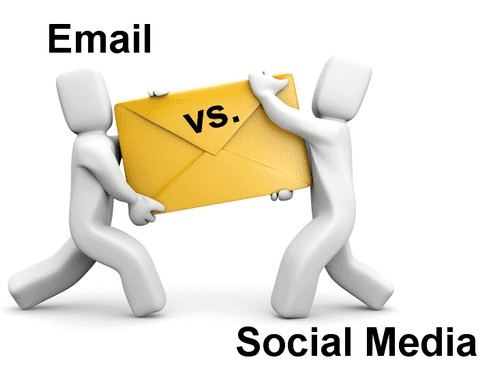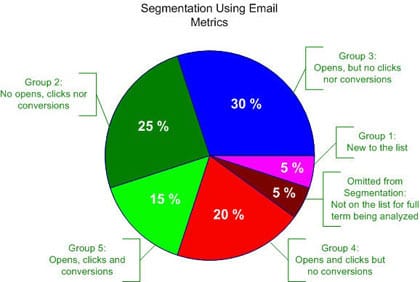Including the 5 "must-know" lifecycle segments
I work in client services for one of the UK's fastest growing email service providers. Although I deal with numerous different organisations and people at various levels on a daily basis, in most cases the range of email topics we discuss is broadly the same.
Email FAQs

The re-occurrence of similar client issues and questions means I invariably end up saying the same kind of things to different people in response.
Here are some of the questions clients most frequently ask:
- Is email marketing ‘on the way out’ and social media where we should now be investing?
- How can we work more effectively with our email technology?
- How can we optimise and save time while increasing our email activity?
- How can we ensure we are giving our customers what they need at each lifecycle stage but we can still make money?
I guess it's sometimes easy for me to forget the fact that, while email is my daily bread and butter, this isn't necessarily the case for clients. Sometimes I lose sight of the fact the email principles and guidelines I take for granted, because they’re 100% clear to me, are not so easy to understand or grasp for marketers who regularly deal with a range of direct marketing channels.
So, here are some of the 'pearls of wisdom' I dish out on a daily basis. I hope there is something here of use to you.
Answers to four of the most frequently asked 'email' questions
Some the following points may help you gain buy-in on the importance of email as an effective marketing communication tool from a wider circle of people within your organisation.
1. Email still has significantly more accounts than social media

Email hasn’t been killed off by social media. And, it’s still maintaining its post-recessionary position as the most measurable marketing channel. To put this into perspective, let the numbers do the talking……….
There are currently 3.2 billion active email accounts globally, and this figure is still growing. In comparison, there are currently 750 million Facebook accounts and 300 million accounts on Twitter.
The average person receives approximately 64.8 emails a day, compared to 0.08 on Facebook and 0.47 tweets. So, it’s fair to say that, while social media certainly has revolutionised modern day communication, it certainly isn’t the huge threat to email that some are making out. And, for an online business, social media is far from being a lucrative sales channel.
Email has been described as the ‘workhorse’ of marketing and that’s exactly what it is.
Email is inexpensive and, if it’s done right, email works hard to deliver maximum results with minimal effort. The days of ‘spray and pray’ are long gone, however.
It’s now time to get to grips with your database and use eCRM effectively to make your email marketing programmes work for your organisation and deliver the best results.
2. Get the most from your technology
Whether you’re using an internal email system or one of the multitude of professional email marketing platforms available, it’s important to ensure you’re making the most of the tools at your disposal.
- Are you using CMS templates to save time coding and ensure brand consistency?
- Are you testing your creative and subject lines to ensure optimum response rates?
- Have you set up automated triggers based on your customers’ lifecycles and recipients’ behaviour?
3. Know your customers
Understanding your recipients and their lifecycle stages will help you segment and target them more effectively.
You will be sending a lot less email in a highly targeted way and achieving better results – the old mantra; ‘right person, right message, right time’.

Source: ClickZ
The most common customer lifecycle stages correspond to the following segments:
Common lifecyle group A: Prospects
- Signing up for newsletter indicates real interest, so a simple ‘you are now registered’ is abusing this interest. Use this moment to engage the new subscriber with the first email of a clearly thought-out welcome programme.
- A good welcome message can expect up to 7x higher response rate than a regular newsletter.
- Use initial communications to find out more about your subscribers – their wants, needs, expectations. Now is the best time to collect data to use in segmentation and targeting later in the customer lifecycle.
Common lifecyle group B: 1st time buyers
- Ask recipients and customers for feedback. Did everything go smoothly in the purchase process? Is there any further information they need from you at this point?
- Ask recipients and customers for feedback. Did everything go smoothly in the purchase process? Is there any further information they need from you at this point?
- Use the data you have to decide how to proceed and target them going forward. Depending on the type of business you operate, you might prioritise the collection of:
- Contact information > personalised/geographic specific content
- How many items/how much was spent in the first order > often correlates with likelihood of a second purchase
- When the purchase was made > based on average sell cycles to assess probability of repeat purchase
- Products purchased > logically predict which products to offer next
Common lifecyle group C: Established customers
- Now you have some established customers you can use their previous purchase behaviour to refine your email targeting. For example, dynamic email content can reflect each customer’s previously purchased product ranges, or upsell/cross-sell add-ons or accessories. Make the offering as relevant as possible using the wealth of information you now hold.
- Which email links are your customers clicking on, and are you targeting them on this basis? Set your links into categories so you can target future email content more specifically.
- Set up automated trigger campaigns based on key customer dates you’re aware of; for example:
- Birthdays
- Post-purchase – upsell/cross-sells
- User generated content – request for a product/service review?
- Cart abandonment programmes
- Recently browsed items – dynamic content into a promotional product email
- ‘Time to repurchase’ campaigns
Common lifecyle group D: Premium customers
These are the customers you need to keep loyal. There are various types of loyalty programme you can implement, from a traditional ‘collecting points to buy products’ type to alternative approaches, such as:
- Reward loyal customers with exclusive deals or products
- VIP areas on the website
- Advanced previews of new product launches
Common lifecyle group E: Lapsed customers
Depending on your organisation and the average sell cycles and buying patterns of your audience, you can implement a variety of reactivation -type campaigns. Once again, each campaign is based on ‘last purchase date’ triggers:
- Incentive to re-purchase – discount or gift with purchase
- ‘We miss you’ messaging
- Link to update preferences for email communications
- ‘Last chance’ offers
- Reduce email communication frequency during the lapsed period to maintain some response rate, even if it falls short of full conversion
- Survey to ascertain why they’ve lapsed
Finding the right programmes and techniques for your specific organisation is the key to email marketing success.
4. Reap the rewards
- Many email campaigns are triggered by and use dynamic content, meaning you can save time and resources by only setting them up once - all you have to do then is launch the campaign and track the results.
- Understanding and using your customer data not only improves the relevance of your campaigns; it also results in continuous improvement in your data hygiene.
- Implementing highly targeted programmes and increasing their relevance to recipients greatly improves your deliverability rates. Improved list hygiene decreases hard bounce rates and targeted relevant content goes a long way to ensuring you hit the inbox every time, despite ever-changing ISP relevancy rules.
- Open and click rates are the most measurable outcome of relevancy-driven campaigns. And, along with conversion rates, they are the best basis to demonstrate email programme success.
Ultimately, the more targeted and relevant the campaigns to your customer base, the higher your ROI. It’s a no brainer – so ‘get relevant’!
Image credits: Silicon Cloud, Reliable Networks

Thanks to
Julia Fearn (Müller) for sharing her advice and opinions in this post. Julia is an Account Director at emarsys.
Julia would also like to thank Sarah Dyer, marketing manager at emarsys for her input, a collaborative effort!










